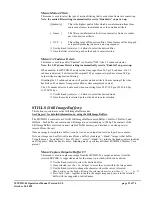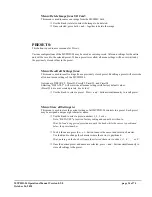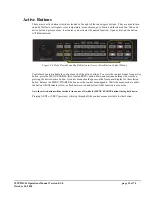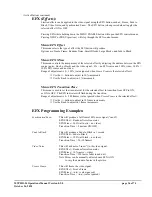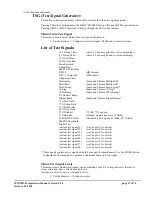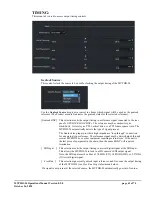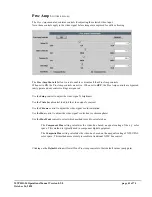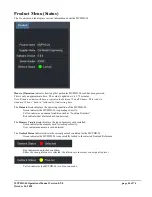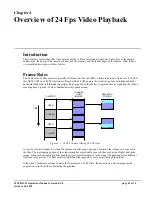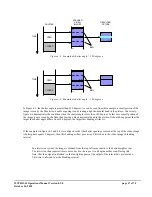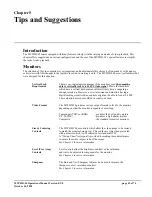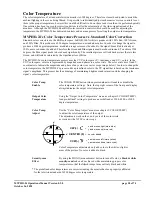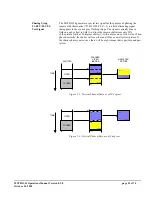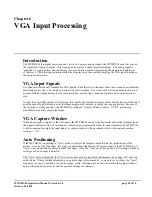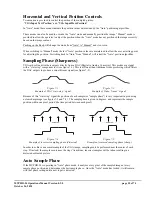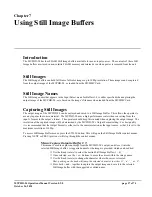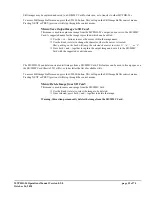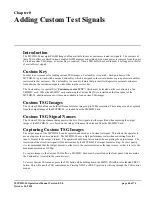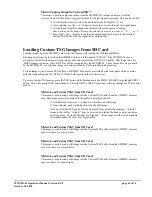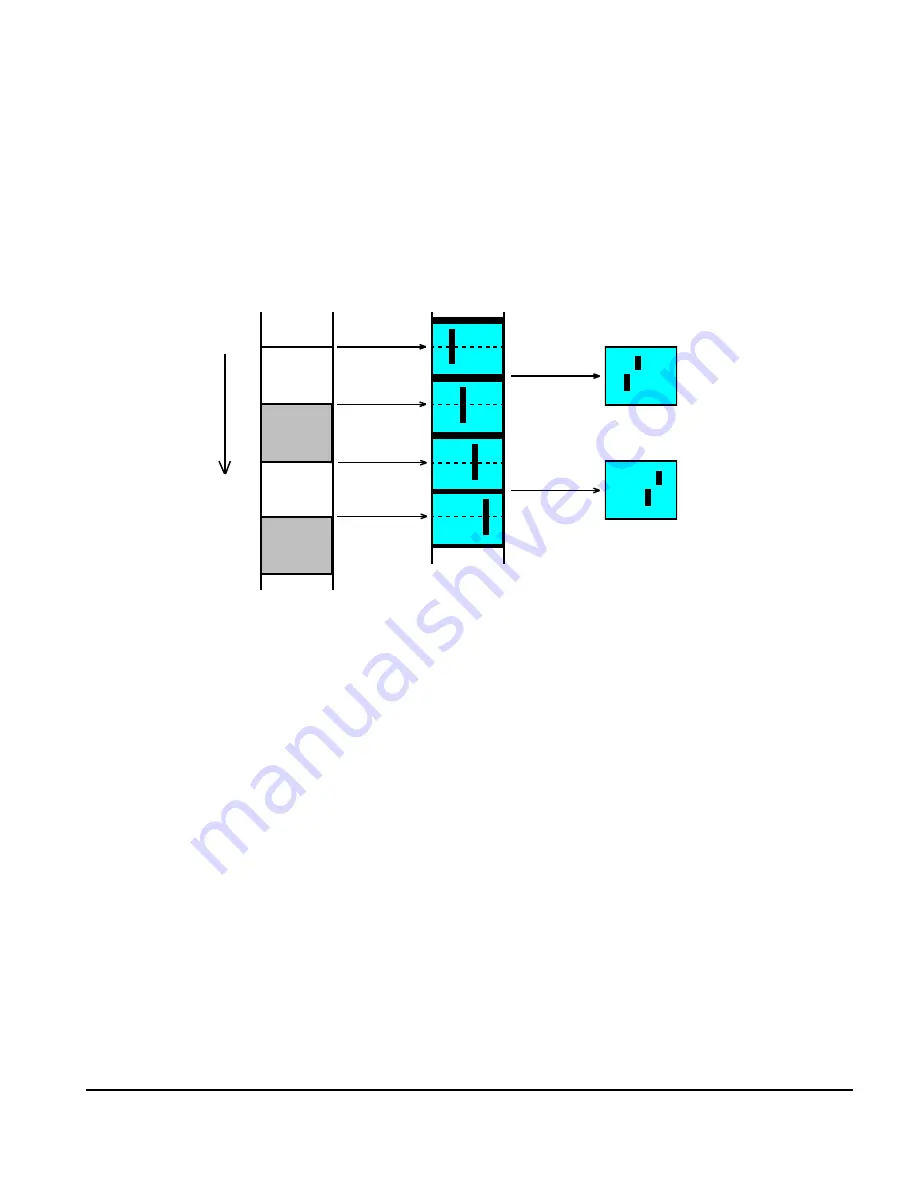
MVPHD-24 Operations Manual Version 0.9.0 page 46 of 74
October 26, 2020
Shutter Phase
Once the video’s frame rate is made equal to the camera’s frame rate, then the phases of the camera’s shutter
and the monitor become important. It will be assumed that the camera’s shutter is open 50% of the time and closed
the other 50%. Because the time period of one shutter opening equals one video image, one complete picture will
always be exposed onto the film with no light or dark bands. However, depending on the phase of the shutter with
respect to the video, the exposed picture may actually contain portions of different video images. This becomes a
problem when there is motion in the video image. Figure 4-2 demonstrates the effects of shutter phase and motion.
SHUTTER
OPEN
OPEN
TIME
TOP
BOTTOM
SCA NNED
VIDEO
IMAGES
TOP
BOTTOM
RESULTING
PICTURE
TOP
BOTTOM
CLOSED
CLOSED
TOP
BOTTOM
TOP
BOTTOM
TOP
BOTTOM
1
2
3
4
Figure 4-2. Effect of phase difference on motion.
In figure45-2, the sequence of video images shows an object moving left to right. The time that the shutter opens is
occurring in the middle of a video image. The film will be exposed with the bottom portion of image 1 and the top
portion of image 2. This results in a picture where any objects in motion may be split in half.
The preceding example demonstrated a 90 degree phase difference between the shutter and the video image. If the
phase of the camera’s shutter or the phase of the video image can be adjusted to bring these two into alignment (or 0
degrees), then a whole picture without motion splitting will be produced.
Shutter Angles
The preceding discussion assumed that the camera’s shutter was open 50% of the time and closed the other 50%.
This 50/50 condition is referred to as a 180 degree shutter angle.
Referring back to figure 4-2, it was seen that with a 180 degree shutter angle, one whole picture was produced from
two halves (even though there may be motion artifacts). This worked because the time of the shutter opening was
exactly the time of one video image. If the shutter angle is now changed to 51% open and 49% closed (~184
degrees), then the open time is now greater than one video image. This will result in one and a fraction video images
being exposed onto the film. If the shutter and the video image are not in alignment (as in figure 4-2), then a light
horizontal band will be produced in the middle of the picture. Figure 4-3 demonstrates this effect.

